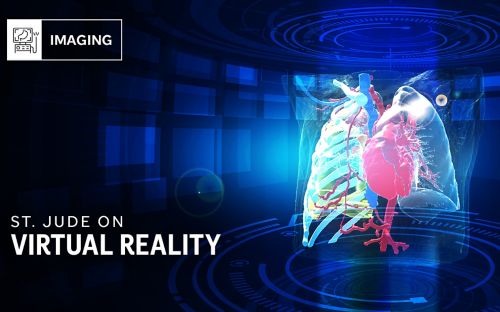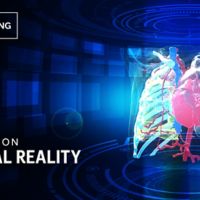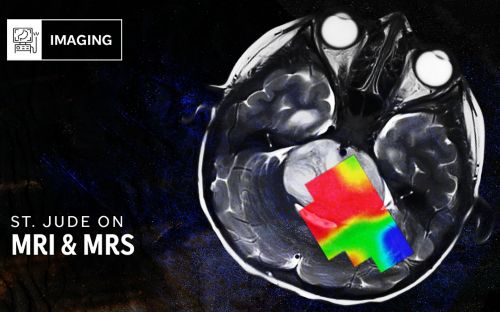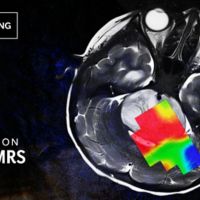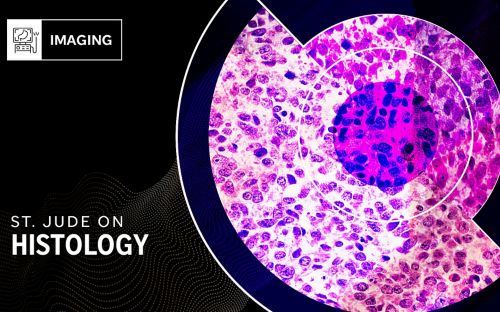Spatial omics takes off

Spatial omics allows St. Jude researchers to understand the arrangement of cells in tissues and tumors like never before.
With a well-timed flap of its wings, a starling rapidly changes direction, sensing a slight change in the winds. Around it, hundreds of other starlings follow suit, matching each movement with millisecond accuracy. The cloud of birds swirls and dives, a dance in the sky driven by a razor-sharp awareness of each other and their environment.
To understand this spectacle is to understand the importance of spatial arrangement. Within the human body, the starling is a cell, the cloud of birds the tissue. Just as the starlings’ seemingly orchestrated dance is driven by signals sent by individual birds, each cell reads signals emitted by their neighbors and applies them in the context of the larger entity. Due to a recent explosion of technical advances, the information gained from exploring this process of coordination and spatial arrangement in tissues, organs and diseases is now beginning to be appreciated.
St. Jude is at the forefront of studying this coordination process by creating a new Center for Spatial Omics. “There have been ways to stain tissues since the 1800s, but that’s always been at the singular level where you tossed one kind of stain on, and then you looked at what a neuron might look like,” said Jasmine Plummer, PhD, St. Jude Center for Spatial Omics director. “So, you might be able to look at one thing in detail, but that’s the only thing you see.”
Armed with the latest technology, Plummer oversees efforts to study the coordination of signaling and movement in cells and tissues to understand the impact of spatial context on biology and disease.
Cells talking to other cells
Spatial biology was the origin for most of what spatial omics is about today. It stems back to the drawings of neuroscientist Santiago Ramón y Cajal from the late 1800s and early 1900s as he peered through his microscope at neurons. These were not just drawings of the components of a cell. These were illustrations of communication — neurons talking to other neurons. “The things that he saw under the microscope — that is spatial,” Plummer states, who keeps an illustration of one of Cajal’s pieces on her shelf, or rather a replica from the artistic re-imaginings of her daughter.
Many basic tenets of studying diseased tissues remain the same; for example, diagnosing a particular type of cancer by staining for specific biomarkers. But as scientists continue to strive to treat and cure disease, new frontiers in research have opened, highlighting the need to understand the interplay between cells in greater detail. Consider the problem of cancer recurrence. Perhaps the cancer returned because the treatment did not affect a particular cell or group of cells. What is it about that cell that makes it different from the others?

With nods to scientific art produced by Santiago Ramón y Cajal and Robert Hooke, the above illustration demonstrates the fluid tandem, movements of cells as a starling murmuration and the enlightenment of cellular natures that can be achieved through the study of spatial omics. Artwork by AnnElizabeth White.
The “-omics” approach
To tackle such questions, biologists take an “-omics”, or “big picture” approach. Scientists will use some or all of the technologies available to address their questions from multiple angles — proteomics to examine the tumor’s protein content, genomics to look at the tumor’s genetic makeup, or metabolomics to look at the various molecules that keep a cell alive.
Considering the need for an -omics approach to address communication, movement, heterogeneity and other more challenging aspects of disease, Plummer looks beyond the single-stain methods. “Genomics has really been at the forefront in technology development. Mutations in your genes can set you up for a specific type of cancer. But it can also guide you to the right type of therapy because we start to target those mutations,” she says.
Current genomic approaches allow scientists to observe thousands of genes at once within individual cells rather than looking at one stain across an entire tissue sample. This single-cell genomics approach is not reserved for looking at mutations. It can also differentiate cells based on their expression levels of different genes. This subsection of genomics is called transcriptomics and is the key to differentiating a cell that responds well to therapy from one that does not.
However, as Plummer points out, “Single-cell transcriptomics can tell us if there is an outlier, but it doesn’t tell us where it is. We have no idea what it’s around without assignment to the neighborhood it lives in.” To understand where the outlier exists, it is necessary to examine transcriptomics in-situ, meaning in cells in their natural original environment. This is spatial transcriptomics. Imagine cells as starlings where different wingspans, vision and age of individual birds within a cloud might show why one group is lagging behind the rest. This type of analysis provides spatial understanding to explain why the cloud behaves the way it does.
Context is everything.
Gone FISHing
While spatial transcriptomics is at the leading edge of technology available to scientists, the science behind how it works is the culmination of years of improvements to existing techniques. Spatial transcriptomics looks at the expression of mRNA for many genes within a cell while maintaining the context of where that cell is located within a tissue. It is rooted in the fundamentals of techniques such as in-situ hybridization (ISH), which uses probes to detect whether a specific strand of mRNA exists within a sample. The addition of fluorescence to these probes created fluorescent ISH, or FISH, and from there the technique became even more sophisticated and combinatorial. Encoding each gene being “FISHed” with a specific color allowed for techniques such as single-molecule FISH (smFISH). Combining this with multiple rounds of hybridization, scientists could now simultaneously see thousands of genes at once.
The development of these technologies focused the lens of single-cell genomics to refine the pictures that researchers were taking of genes. But the technique went spatial with the release of Multiplexed Error-Robust Fluorescence in-situ Hybridization (MERFISH). MERFISH takes the capabilities of smFISH and adds a multiplexed approach, which can detect potentially billions of transcripts within millions of cells and spatially arrange them.
With the immense amount of information this produces, the visualization of results is paramount. Fortunately, the datasets can be translated into striking and visually impressive illustrations of tissues. MERFISH lights up cells in different colors based on the detected transcripts, creating a rainbow map of cell-transcript heterogeneity and an information goldmine. Like looking at the map of a town, we can now also see the neighborhoods of different tissues. “The ability to see within a tissue allows us to discover new cell types that affect disease,” Plummer explains. “Cell types that help resistance to disease and cell types that we can target for better treatment.”
Accompanying ISH in the spatial toolbox is in-situ sequencing (ISS). As the name implies, this powerful technique allows the sequences of mRNA strands to be read directly from the fixed landscape within a cell. The power of ISS lies in its ability to sequence hundreds of mRNA transcripts and pinpoint their location with single-cell accuracy. The coupling of this technique with fluorescent capabilities produced Fluorescent in-situ Sequencing (FISSEQ). Another method of ISS focused on error reduction is Spatially Resolved Transcript Amplicon Readout Mapping (STARmap). All of these techniques work in tandem to help us understand the spatial arrangement of cells in tissue. The decade-long list of advancements with ISS and ISH is lengthy, demonstrating the considerable hunger in the field to increase the resolution limits while also increasing the high-throughput efficiency of spatial transcriptomics.
Finding a space for spatial omics
The spatial aspect of Plummer’s work does not end with the data produced. She finds herself embedded within the pathology world, discovering a space where spatial omics greatly benefits disease tracking and explaining why some tumor cells respond to therapies and some do not. It is a marriage that has been in the making for generations.
“The clinical aspect of the pipeline already exists where you’ve taken tissues, sliced them and stained them. Now it’s about making this pipeline meet current technologies,” says Plummer. “It’s the first time that I am on calls with pathologists, computer scientists and geneticists. What we are doing together is building on existing infrastructure. And the more tissues we do, the better we’ll be at it.”
Recent work from St. Jude published in Nature Communications highlights how the technique already benefits the research realm. Work from Jun Yang, PhD, St. Jude Department of Surgery, and Xiang Chen, PhD, St. Jude Department of Computational Biology, utilized spatial transcriptomics approaches to characterize a new model they developed for hepatoblastoma, a rare form of liver cancer. The results allowed them to explore the heterogeneity of hepatoblastoma tumors and illuminate how they responded to various therapies.
“This is very useful technique, combining single-cell transcriptomics with a spatial context,” said Yang. “This allowed us to directly visualize which anatomical location of the tumor or liver expresses certain cancer markers and gave us an idea of how to think about the tumor heterogeneity in the future to target these more heterogeneous tumor cells.”
Encoded in the future of biology
Exploring how spatial omics can influence the future of basic research, Plummer is cautiously optimistic. “Now we can begin to think about these very cool things happening in a cell where a protein such as a G-protein-coupled receptor that you’ve solved the structure to, or a new drug to target is actually doing inside the cell,” Plummer explains. “And beyond that, the collection of everything it — from a gene expression level — can do. We’re not there yet, by any means. But now that we can start to profile the transcriptome of every individual cell, maybe there is a space and time where those two extremes will start to meet.”
That timeline is likely not measured in decades, either. With the pace of advancement, it might be even shorter than years. While transcriptomics currently rules the spatial world, the new center at St. Jude will also utilize spatial proteomics, which combines advanced microscopy techniques with techniques such as mass spectrometry to explore the protein landscape of tissues.
Spatial translatomics is the additional young challenger on the scene, which allows spatial resolution of protein translation, the process that occurs when a ribosome reads off mRNA and builds these instructions into a protein. This technique enables researchers to look at mRNA strands undergoing this translation process. There is now a map of not just the mRNA strands after their transcription but the ability to see them at work in the ribosome, pinpointing the location of protein production.
By combining spatial transcriptomics, spatial proteomics and now spatial translatomics, we are on the cusp of being able to watch the entire life-cycle of mRNA and the protein product it forms. “Capturing RNA and protein in the same tissue is the key to understanding this dynamic, and now technology is catching up with us to start to enable this.”
At the leading edge of discovery
Where does the future lie for spatial omics? It is hard to say; the field is accelerating at such a rapid pace, it seems to be reinvented every other week. But Plummer has both hands firmly on the wheel and is looking at computation and AI as sources for the next breakthroughs.
“I wouldn’t have expected this [AI] technology to have arisen in my career. I think about how we can pair computation, which has been mainly genomic-based, with a spatial perspective,” Plummer says. “What will be important and exciting is what computation will look like in this field and how much we will be able to contribute to the overall field of biology in terms of pipeline development and in designing ways to look at biology and disease now that AI is really advancing.”
Bringing spatial understanding to our tissues has opened the door for tailoring therapies like never before. The well-orchestrated dance of our cells in tissues might appear less dramatic to observe than a cloud of starlings, but with the technologies that spatial omics brings to the table and the experience and foresight of researchers like Plummer, we can now appreciate it as just as much a powerful force of nature.

